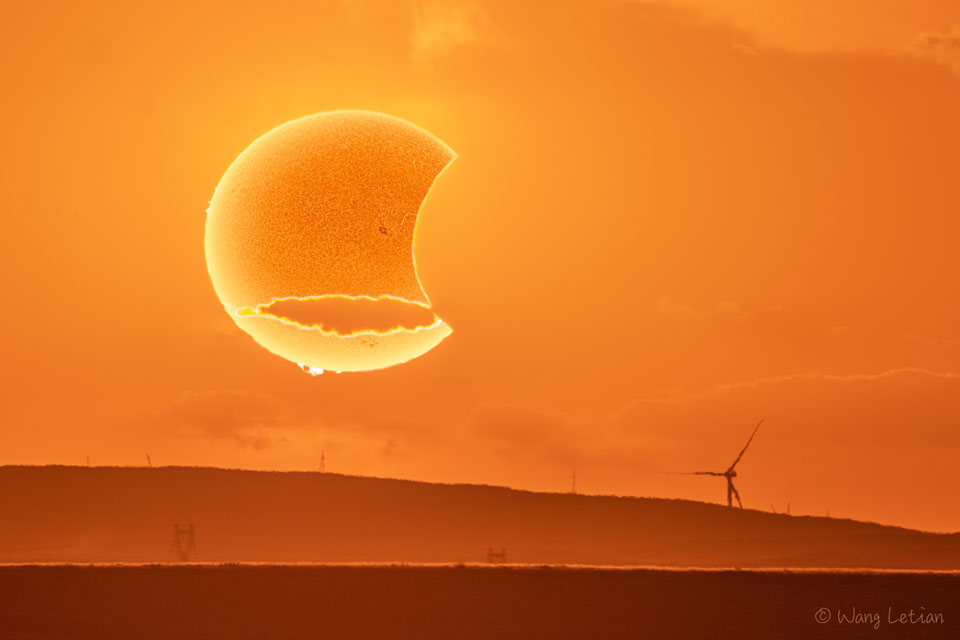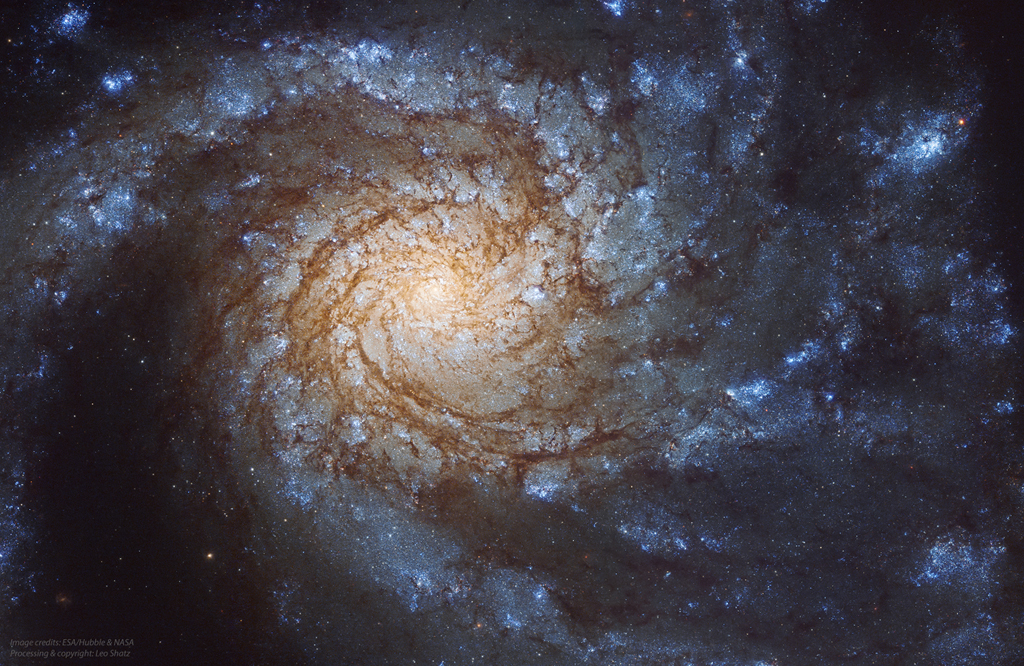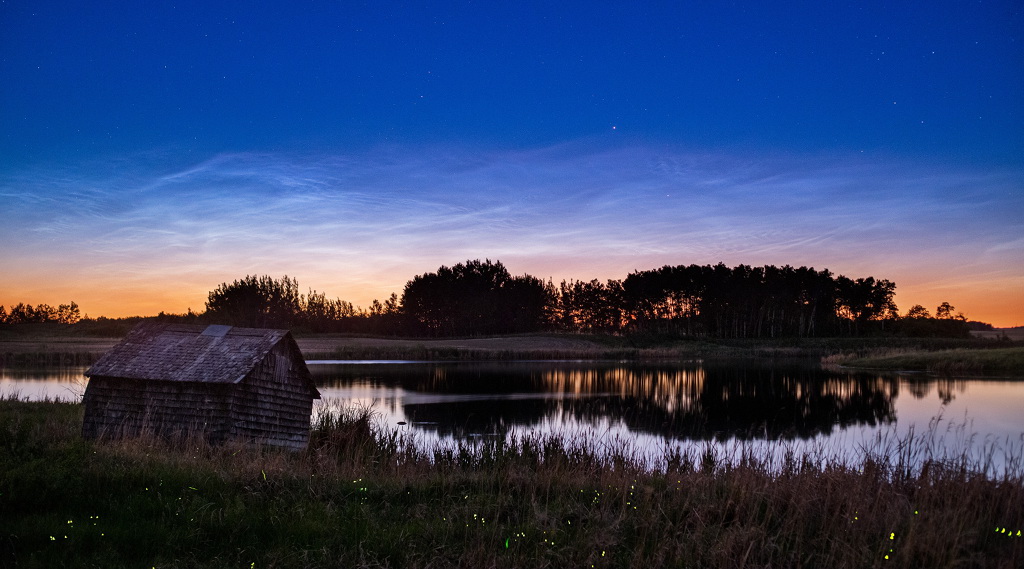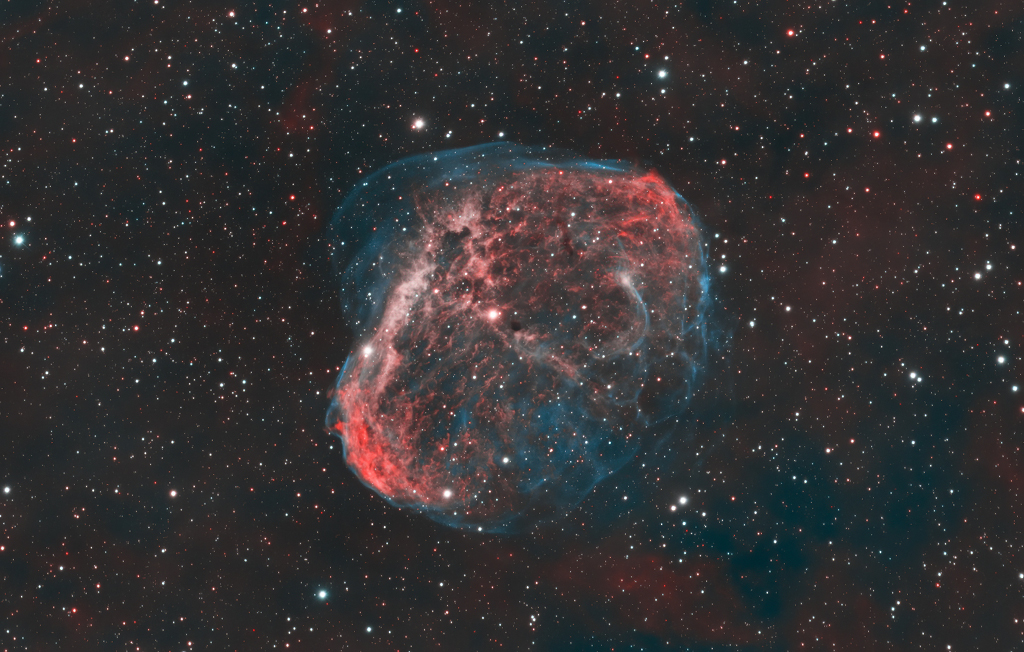Vous en avez assez que de la nourriture reste collée sur la grille du barbecue ? Que ça soit du poisson, comme les sardines, ou de la viande, ça s'accroche toujours sur la grille. Résultat, il faut frotter bien fort pour nettoyer la grille, sinon elle s'encrasse rapidement. Heureusement, il existe un truc incroyable pour que les aliments ne restent plus accrochés sur le bbq. L'astuce est de frotter un oignon sur la grille avant de faire cuire les aliments.
Nombre total de pages vues
01/07/2021
28/06/2021
ASTRONOMY - A Paper Moon Solar Eclipse
2021 June 28
Image Credit & Copyright: Wang Letian (Eyes at Night)
Explanation: It may look like a paper Moon. Sailing past a canvas Sun. But those are not cardboard clouds. And it's not make believe. The featured picture of an orange colored sky is real -- a digital composite of two exposures of the solar eclipse that occurred earlier this month. The first exposure was taken with a regular telescope that captured an overexposed Sun and an underexposed Moon, while the second image was taken with a solar telescope that captured details of the chromosphere of the background Sun. The Sun's canvas-like texture was brought up by imaging in a very specific shade of red emitted by hydrogen. Several prominences can be seen around the Sun's edge. The image was captured just before sunset from Xilingol, Inner Mongolia, China. It's also not make-believe to imagine that the Moon is made of dense rock, the Sun is made of hot gas, and clouds are made of floating droplets of water and ice.
26/06/2021
ASTRONOMY - Pixels in the Sun
2021 June 26
Image Credit & Copyright: Wang Letian (Eyes at Night)
Explanation: These two panels, composed of video frames made with a safe solar telescope and hydrogen alpha filter, show remarkably sharp details on the solar disk and giant prominences along the Sun's edge on June 6 (top) and June 18. Taken from Beijing, China, they also show a transit of the International Space Station and China's new Tiangong Space Station in silhouette against the bright Sun. The International Space Station is near center in the bottom panel, crossing the solar disk left of bright active region AR2833 and below a large looping solar filament. The Chinese space station is below solar active region AR2827 and right of center in the top panel, seen as a smaller, combined "+" and "-" shape. The pictures of the transiting orbital outposts were taken with the same equipment and at the same pixel scale, with the International Space Station some 492 kilometers away. The Chinese space station was over 400 kilometers from the camera.
24/06/2021
ASTRONOMY - Messier 99
2021 June 24
Image Credit: NASA, ESA, Hubble, Janice Lee; Processing & Copyright: Leo Shatz
Explanation: Grand design spiral galaxy Messier 99 looks majestic on a truly cosmic scale. This recently processed full galaxy portrait stretches over 70,000 light-years across M99. The sharp view is a combination of ultraviolet, visible, and infrared image data from the Hubble Space Telescope. About 50 million light-years distant toward the well-groomed constellation Coma Bernices, the face-on spiral is a member of the nearby Virgo Galaxy Cluster. Also cataloged as NGC 4254, a close encounter with another Virgo cluster member has likely influenced the shape of its well-defined, blue spiral arms.
23/06/2021
ASTRONOMY - HD 163296: Jet from a Star in Formation
2021 June 22
Image Credit: Visible: VLT/MUSE (ESO); Radio: ALMA (ESO/NAOJ/NRAO)
Explanation: How are jets created during star formation? No one is sure, although recent images of the young star system HD 163296 are quite illuminating. The central star in the featured image is still forming but seen already surrounded by a rotating disk and an outward moving jet. The disk is shown in radio waves taken by the Atacama Large Millimeter Array (ALMA) in Chile, and show gaps likely created by the gravity of very-young planets. The jet, shown in visible light taken by the Very Large Telescope (VLT, also in Chile), expels fast-moving gas -- mostly hydrogen -- from the disk center. The system spans hundreds of times the Earth-Sun distance (au). Details of these new observations are being interpreted to bolster conjectures that the jets are generated and shaped, at least in part, by magnetic fields in the rotating disk. Future observations of HD 163296 and other similar star-forming systems may help fill in details.
22/06/2021
19/06/2021
ASTRONOMY - Northern Summer Twilight
2021 June 19
Image Credit & Copyright: Justin Anderson
Explanation: Nights grow shorter and days grow longer as the summer solstice approaches in the north. Usually seen at high latitudes in summer months, noctilucent or night shining clouds begin to make their appearance. Drifting near the edge of space about 80 kilometers above the Earth's surface, these icy clouds were still reflecting the sunlight on June 14. Though the Sun was below the horizon as seen north of Forrest, Manitoba, Canada, they were caught in a single exposure of a near midnight twilight sky. Multiple exposures of the foreground track the lower altitude flash of fireflies, another fleeting apparition shining in the summer night.
18/06/2021
ASTRONOMY - Devil Horns from a Ring of Fire
2021 June 18
Image Credit & Copyright: Madhup Rathi
Explanation: Atmospheric refraction flattened the solar disk and distorted its appearance in this telescopic view of an Atlantic sunrise on June 10. From Belmar, New Jersey on the US east coast, the scene was recorded at New Moon during this season's annular solar eclipse. The Moon in partial silhouette gives the rising Sun its crescent shape reminding some of the horns of the devil (or maybe a flying canoe ...). But at its full annular phase this eclipsed Sun looked like a ring of fire in the heavens. June's annular solar eclipse followed on the heels of the total lunar eclipse of late May's Full Moon. Of course, that total lunar eclipse was a dramatic red Blood Moon eclipse.
17/06/2021
ASTRONOMY - NGC 6888: The Crescent Nebula
2021 June 17
Image Credit & Copyright: Joe Navara, Glenn Clouder, Russell Discombe
Explanation: NGC 6888, also known as the Crescent Nebula, is a about 25 light-years across blown by winds from its central, bright, massive star. A triumvirate of astroimagers ( Joe, Glenn, Russell) created this sharp portrait of the cosmic bubble. Their telescopic collaboration collected over 30 hours of narrow band image data isolating light from hydrogen and oxygen atoms. The oxygen atoms produce the blue-green hue that seems to enshroud the detailed folds and filaments. Visible within the nebula, NGC 6888's central star is classified as a Wolf-Rayet star (WR 136). The star is shedding its outer envelope in a strong stellar wind, ejecting the equivalent of the Sun's mass every 10,000 years. The nebula's complex structures are likely the result of this strong wind interacting with material ejected in an earlier phase. Burning fuel at a prodigious rate and near the end of its stellar life this star should ultimately go out with a bang in a spectacular supernova explosion. Found in the nebula rich constellation Cygnus, NGC 6888 is about 5,000 light-years away.
16/06/2021
PRATIQUE/POURQUOI - Pourquoi y a-t-il des "trous d'air" en avion ?
ASTRONOMY - 3I/ATLAS Flyby
025 December 26 3I/ATLAS Flyby Image Credit & Copyright : Dan Bartlett Explanation: Attention grabbing interstellar visitor 3I/AT...
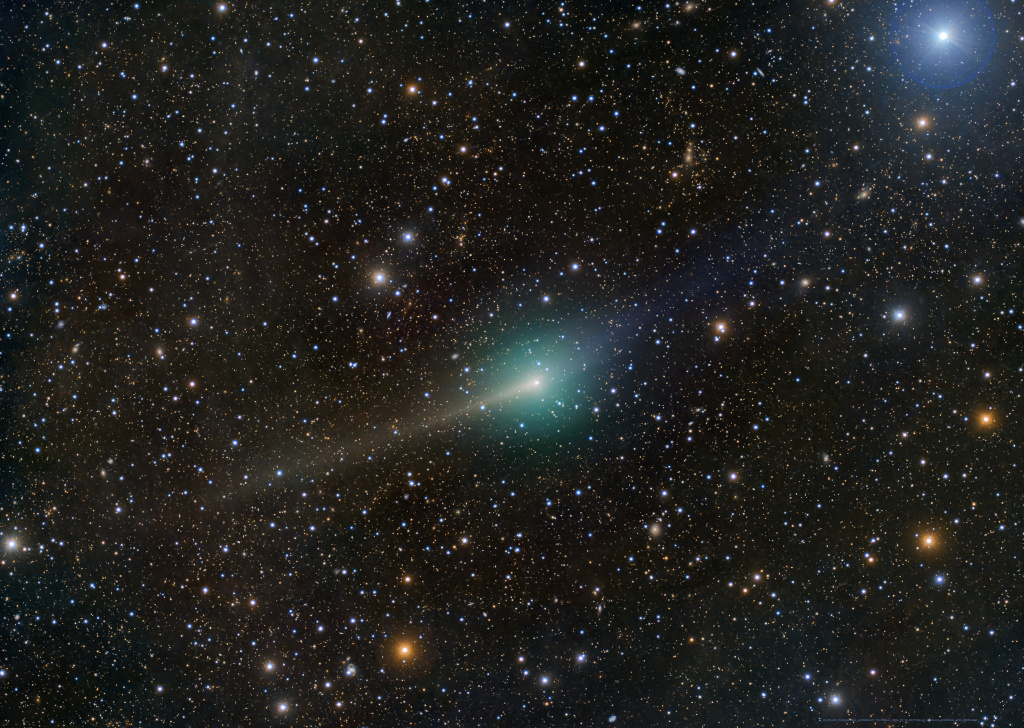
-
2022 September 26 All the Water on Planet Earth Illustration Credit: Jack Cook, Adam Nieman, Woods Hole Oceanographic Institution ; Data ...
-
2025 May 11 The Surface of Venus from Venera 14 Image Credit: Soviet Planetary Exploration Program , Venera 14 ; Processing & Copyri...

